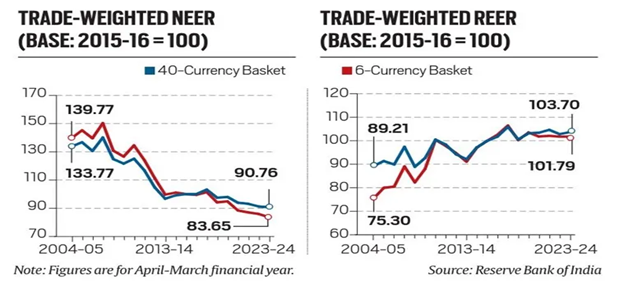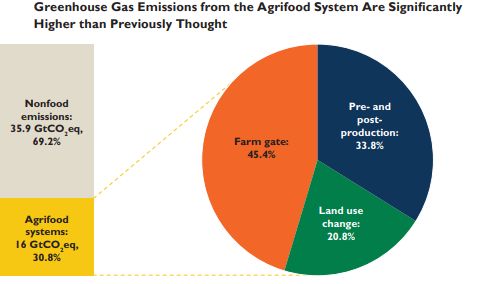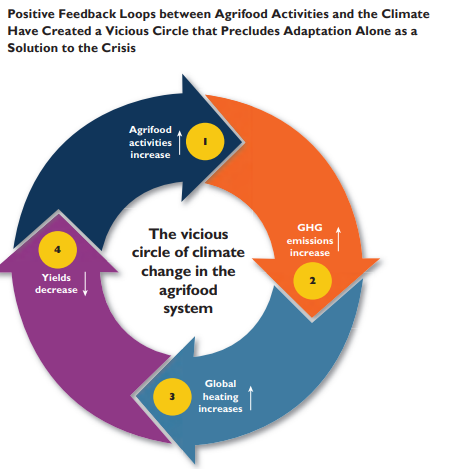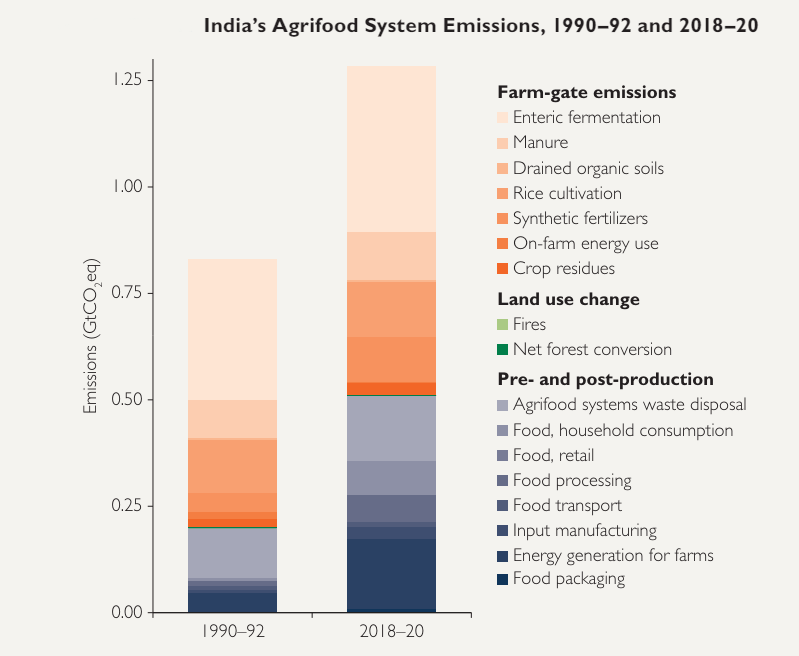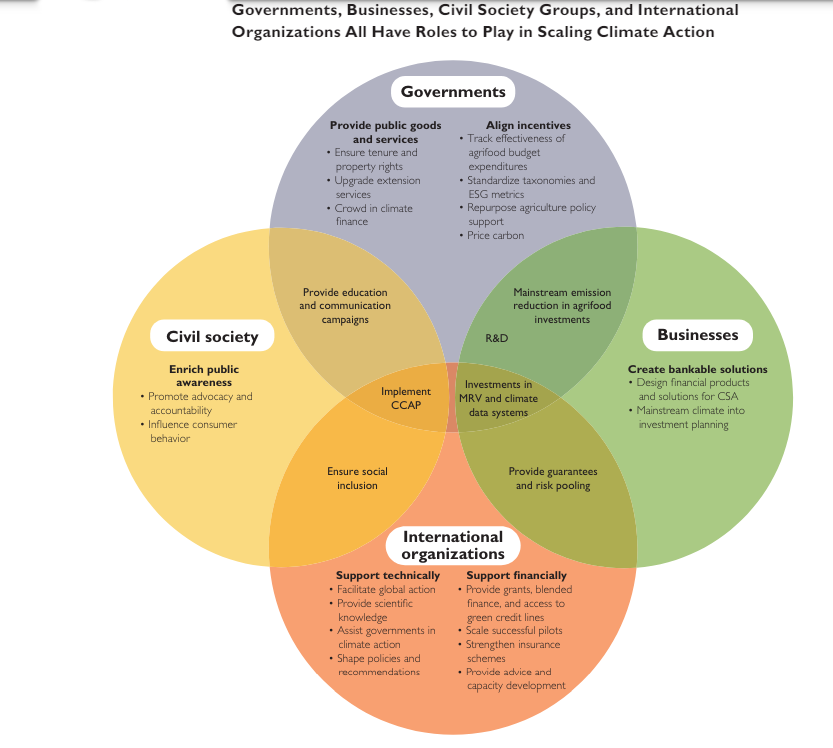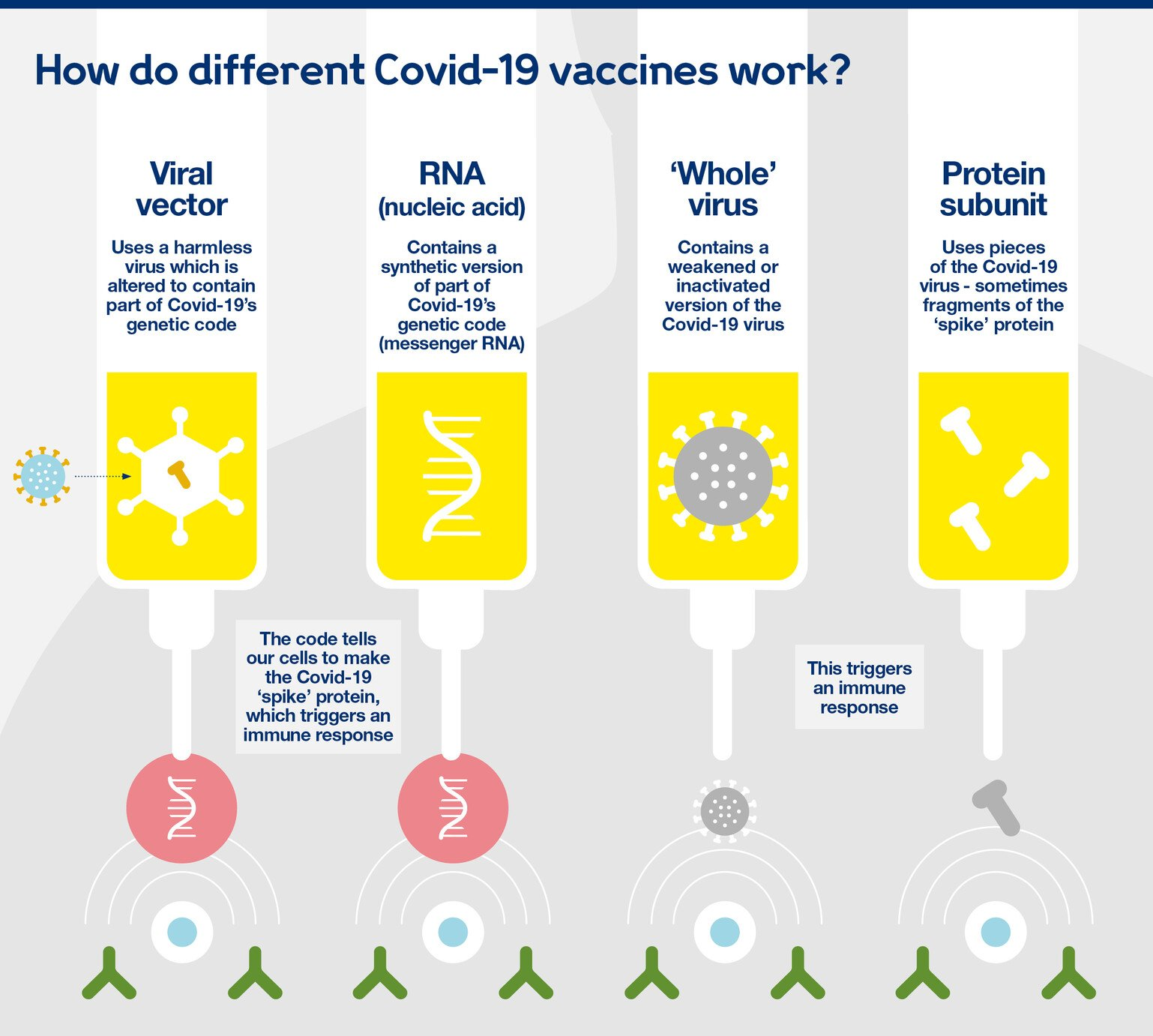Socio-Ecological Impact of LPG Price Escalation
For Prelims: Pradhan Mantri Ujjwala Yojana (PMUY), Liquefied Petroleum Gas, Biogas, Renewable energy, PAHAL scheme, Direct Benefit Transfer Scheme
For Mains: Socio-economic and environmental implications of reliance on fuelwood, Initiatives to promote LPG usage.
Why in News?
Recently, a study revealed heavy reliance on fuelwood in Jalpaiguri, West Bengal despite government efforts to promote Liquefied Petroleum Gas (LPG).
- It highlights the high prices of LPG and environmental impact of reliance on fuelwood, raising sustainability concerns and emphasising the need for accessible
alternatives.
What are the Key Highlights of the Study?
- Dependence on Forests for Fuelwood: Local communities in Jalpaiguri heavily rely on forests for fuelwood due to limited access to alternative cooking fuels.
- Economic Constraints: The cost of commercial LPG cylinders, priced at over Rs 1500 is considered exorbitant for many households, particularly those below the poverty line.
- Government Initiatives: Government schemes, such as the Pradhan Mantri Ujjwala Yojana (PMUY), facilitated the transition from fuelwood to LPG initially, but the subsequent increase in LPG prices posed a challenge.
- Despite efforts to increase LPG penetration in rural areas, many households only refill their cylinders infrequently due to the high cost.
- Environmental and Social Implications: Dependence on fuelwood contributes to forest degradation and increases the risk of human-wildlife conflicts, particularly
encounters with elephants.- The persistence of fuelwood usage jeopardises forest health, wildlife habitats, and local livelihoods.
- Sustainable Alternatives: Collaborative efforts with the West Bengal Forest Department and Joint Forest Management Committees aim to promote sustainable forest
management practices.- Initiatives include planting saplings of high fuelwood value in villages, promoting efficient cooking stoves, optimising shade tree density in tea plantations, and
fostering multi-stakeholder engagement for resource governance.
- Initiatives include planting saplings of high fuelwood value in villages, promoting efficient cooking stoves, optimising shade tree density in tea plantations, and
- Locally Acceptable Solutions: To secure forests, wildlife, and livelihoods, it is imperative to develop locally acceptable and sustainable alternatives to fuelwood.
- Community involvement and engagement with relevant stakeholders are crucial for the success and adoption of alternative cooking fuels and forest conservation efforts.
Has the Government Pushed the Use of LPG?
- The Indian government has made efforts to increase LPG adoption in rural households:
- Launched the Rajiv Gandhi Gramin LPG Vitrak scheme in 2009 to expand LPG distribution in remote areas.
- Initiated direct benefit transfers for LPG under the 'PAHAL' scheme in 2015.
- Implemented direct home-refill deliveries and the 'Give it Up' program in 2016.
- Introduced the Pradhan Mantri Ujjwala Yojana (PMUY) in 2016 to install LPG connections in 80 million below-poverty-line households.
- The scheme also provides a subsidy of Rs 200 for every 14.2-kg cylinder, which increased to Rs 300 in October 2023.
- However, despite these efforts, LPG prices in India were reportedly the highest among 54 countries in 2022, at around ₹300/liter.
Note:
- The prices of LPG, petrol, and diesel in India are among the highest in the world. While arguments include external factors and higher prices globally, the real impact
is greater in India due to differences in purchasing power and affordability.- Using purchasing power parity (PPP) dollars, the price of petrol in India is the 3rd highest globally, behind only Sudan and Laos.
- LPG prices in India are the world's highest. Diesel prices in India are the 8th highest.
- Data from the 2014-2015 ACCESS survey, conducted by the Council on Energy, Environment and Water, found LPG’s cost to be the foremost barrier to its adoption and
continued use in rural poor households.- Thus, 750 million Indians primarily use solid cooking fuels (wood, dung, agricultural residues, coal, and charcoal) every day.
- Solid cooking fuels are associated with innumerable health hazards and socio-economic and environmental impacts.
What Drives India's High LPG Prices?
- Dependency on Imports:
- India relies heavily on imports for LPG, with more than 60% of its needs being met through imports.
- This import dependence contributes significantly to the pricing dynamics of LPG in the country.
- India's LPG prices are influenced by the average Saudi Contract Prices (CP) for propane and butane.
- LPG is a mix of gasses, mainly consisting of butane and propane, with the percentage of butane limited.
- The CP is the international price for LPG trading, as set by Saudi Aramco.
- The average Saudi CP increased from USD 454 per tonne in FY20 to USD 710 in FY23, contributing to the hike in LPG prices.
- Analysts attribute this rise to improved demand from Asian markets, especially for petrochemicals, where propane serves as a crucial feedstock.
- Import Dynamics:
- India's import of 8.7 million tonnes of LPG in April-September 2022 out of a total consumption of 13.8 million tonnes underscores its reliance on imported LPG.
- The pricing formula for LPG in India is dependent on global market trends, particularly in the Middle East, which is India's largest LPG supplier.
- Impact on Consumers:
- The recent hike of Rs 50 per cylinder in March 2023 translates to a 4.75% increase in the price of a 14.2 kg domestic LPG cylinder in Delhi.
- Taxes and dealer commissions contribute to only 11% of the cylinder's retail price, with almost 90% attributed to the cost of LPG itself, unlike petrol and diesel prices where taxes dominate.
What are Potential Solutions for Reducing Dependency on Fuelwood?
- Promoting Renewable Energy Sources: Encouraging the adoption of renewable energy sources such as solar, wind, and hydropower can help reduce reliance on fuelwood.
- Many countries have implemented policies and incentives to promote the use of renewable energy, such as feed-in tariffs, tax credits, and subsidies.
- Improved Cookstoves: Traditional stoves waste a lot of heat. Distributing Improved Cookstoves (ICS) that burn fuelwood more efficiently can significantly reduce
consumption.- For example, projects in Nepal have shown that ICS use can cut fuelwood needs by half.
- The Global Alliance for Clean Cookstoves, a public-private partnership, has worked to distribute over 80 million clean and efficient cookstoves in developing countries
since its inception in 2010.
- Alternative Fuels: Promoting the use of alternative fuels such as biogas, pellets, or briquettes made from agricultural waste can reduce the demand for fuelwood and
provide a more sustainable energy source. - Sustainable Forest Management Practices: Ensuring sustainable forest management practices can help maintain a balance between fuelwood extraction and forest
regeneration, reducing the environmental impact of fuelwood consumption.
|
Drishti Mains Question: Q. How do environmental and social consequences of fuelwood dependency intersect with the factors driving high LPG prices in India? |
UPSC Civil Services Examination, Previous Year Questions (PYQ)
Prelims
Q. According to India’s National Policy on Biofuels, which of the following can be used as raw materials for the production of biofuels? (2020)
- Cassava
- Damaged wheat grains
- Groundnut seeds
- Horse gram
- Rotten potatoes
- Sugar beet
Select the correct answer using the code given below:
(a) 1, 2, 5 and 6 only
(b) 1, 3, 4 and 6 only
(c) 2, 3, 4 and 5 only
(d) 1, 2, 3, 4, 5 and 6
Ans: (a)
Mains
Q. Access to affordable, reliable, sustainable and modern energy is the sine qua non to achieve Sustainable Development Goals (SDGs).” Comment on the progress made in India in this regard. (2018)
Strengthening of Rupee
For Prelims: Depreciation of Indian Rupee, REER, NEER, Currency depreciation, inflation, Depreciation Vs Devaluation, Appreciation Vs Depreciation
For Mains: Impact of Depreciation of Indian Rupee on economy, Factors affecting strengthening and weakening of Indian Rupee
Why in News?
The Indian Rupee depreciated by around 27.6% against the US dollar in the last 10 years.
- The currency has gained real value when considering its exchange rate against major global currencies.
How is the Decadal Journey of the Indian Rupee?
- The rupee fell from Rs 44.37 to Rs 60.34 (26.5%) from 2004 to 2014 against the US dollar.
- The rupee has further depreciated from Rs 60.34 to Rs 83.38 (27.6%) against the US dollar in the last between 2014 to 2024.
- Appreciation and depreciation of currency refer to changes in the value of a currency relative to other currencies in the foreign exchange market.
- Between 2004 and 2024, rupee declined by 32.2% (from 133.77 to 90.76) as per 40-currency basket NEER and 40.2%, (from 139.77 to 83.65) as per 6-currency basket NEER and during the same period.
- The rupee’s average exchange rate against the US dollar dropped by 45.7%, from Rs 44.9 to Rs 82.8.
- Therefore, between 2004 and 2024, the rupee has undergone a smaller depreciation against the currencies of India's major trading partners compared to its depreciation solely against the US dollar.
- Also rupee’s trade-weighted REER for both 40-currency and 6-currency basket has increased in the last 20 years indicating that Rupee strengthened between 2004-05 and 2023-24.
- Rupee has strengthened in real terms over time, while ruling at 100 or above most of the time in the last 10 years.
What is an Exchange Rate?
- About:
- An exchange rate is the rate at which one currency can be exchanged for another currency. It represents the value of one currency in terms of another currency.
- Exchange rates are typically expressed as the amount of one currency needed to purchase one unit of another currency.
- Types:
- Fixed Exchange Rate: Governments or central banks set the value of their currency in relation to other currencies and maintain that value by buying or selling their own currency in foreign exchange markets.
- Floating Exchange Rate: Value of a currency is determined by the forex market based on supply and demand. Most major currencies operate under this system.
- Managed Float: A mix of fixed and floating exchange rates where governments intervene occasionally to stabilise their currency's value.
- Factors Affecting Exchange Rates:
- Interest Rates: Higher interest rates in a country tend to attract foreign investment, increasing demand for that country's currency and strengthening its exchange rate.
- Inflation: If inflation is higher in a country compared to its trading partners, its currency weakens as its purchasing power decreases.
- Economic Growth: A strong and growing economy fosters confidence in a country's currency, leading to a stronger exchange rate.
- Political Stability: Political instability can deter foreign investment and weaken a country's currency.
- Supply and Demand: The fundamental principle of supply and demand plays a major role. If more people want to buy a particular currency (higher demand), its exchange rate strengthens.
What is Effective Exchange Rate (EER)?
- About:
- The Effective Exchange Rate (EER) of a currency is a weighted average of its exchange rates against other currencies, adjusted for inflation and trade competitiveness.
- The currency weights are derived from the share of the individual countries to India’s total foreign trade.
- Effect on Strength of a Currency:
- Strength or Weakness of a Currency depends on the Exchange rate of that currency with the currency of all trading Partners.
- For India, The strength or weakness of the Rupee is, hence, a function of its exchange rate with not just the US dollar, but also with other global currencies.
- In this case, it would be against a basket of currencies of the country’s most important trading partners, termed as the rupee’s “Effective Exchange Rate” or EER.
- Types of Effective Exchange Rate(EER):
- Nominal Effective Exchange Rate (NEER): NEER is a simple average of bilateral exchange rates between the domestic currency and the currencies of major trading partners, weighted by the respective trade shares.
- NEER measures the overall strength or weakness of a currency relative to a basket of other currencies without adjusting for inflation.
- The NEER indices are with reference to a base value of 100 and base rear as 2015-16.
- The Reserve Bank of India has constructed NEER indices of the rupee against a 2 different baskets of Currencies:
- 6 Currency Basket: It is a trade-weighted average rate at which the rupee is exchangeable with a basic currency basket, comprising the US dollar, the euro, the Chinese yuan, the British pound, the Japanese yen and the Hong Kong dollar.
- 40 currencies Basket: It covers a bigger basket of 40 currencies of countries that account for about 88% of India’s annual trade flows.
- Nominal Effective Exchange Rate (NEER): NEER is a simple average of bilateral exchange rates between the domestic currency and the currencies of major trading partners, weighted by the respective trade shares.
- Real Effective Exchange Rate (REER):
- REER adjusts NEER for differences in inflation rates between the domestic economy and its trading partners. It reflects changes in the relative price levels of goods and services.
- REER provides a more accurate measure of a currency's trade competitiveness by accounting for changes in price levels.
- REER is calculated by dividing NEER by a price deflator (such as Consumer Price Index) for the domestic economy and multiplying by 100.
What are the Implications of Currency Depreciation on the Indian Economy?
- Positive Impacts:
- Boosts Exports: Indian exports become cheaper for foreign buyers, potentially increasing demand and boosting export earnings.
- Inward Remittances: A weaker rupee will enable workers abroad to send more rupees back home when they convert their foreign currency earnings.
- This can increase disposable income in India.
- Negative Impacts:
- Higher Import Costs: Imported goods, including essential items like oil and machinery, become more expensive.
- This can lead to inflationary pressures, where the general price level of goods and services rises, impacting the common man's purchasing power.
- Costlier Foreign Debt: If India has borrowed money in foreign currencies, a weaker rupee means it has to pay back more rupees to settle the debt.
- This can strain the government's finances.
- Discourages Foreign Investment: A depreciating rupee can be seen as a sign of economic instability, potentially discouraging foreign investors from investing in India.
- Higher Import Costs: Imported goods, including essential items like oil and machinery, become more expensive.
Devaluation and Depreciation of Currency
|
Feature |
Devaluation |
Depreciation |
|
Cause |
Government Action |
Market Forces (Demand and Supply) |
|
Exchange Rate System |
Fixed |
Floating |
|
Intentionality |
Deliberate Action to Weaken Currency for economic gain |
Natural Decline in Value |
|
Control |
Government Control Exchange Rate |
Market Determines Exchange Rate |
|
Drishti Mains Question: Analyse the relationship between inflation and exchange rates in the Indian economy. Discuss the challenges posed by this relationship and suggest policy measures to manage them. |
UPSC Civil Services Examination Previous Year Question (PYQ)
Prelims
Q1. Which one of the following is not the most likely measure the Government/RBI takes to stop the slide of the Indian rupee? (2019)
(a) Curbing imports of non-essential goods and promoting exports
(b) Encouraging Indian borrowers to issue rupee-denominated Masala Bonds
(c) Easing conditions relating to external commercial borrowing
(d) Following an expansionary monetary policy
Ans: (d)
Q2. Consider the following statements:
- The effect of devaluation of a currency is that it necessarily
- improves the competitiveness of the domestic exports in the foreign markets
- increases the foreign value of domestic currency
- improves the trade balance
Which of the above statements is/are correct?
(a) 1 only
(b) 1 and 2
(c) 3 only
(d) 2 and 3
Ans: (a)
Mains
Q. How would the recent phenomena of protectionism and currency manipulations in world trade affect macroeconomic stability of India? (2018)
Recipe For A Livable Planet Report of World Bank
For Prelims: Carbon sequestration, Agricultural Emissions, GHG Emissions, UNFCCC, Carbon credits, Net zero emissions, General issues on environmental ecology, Climate change, GHG emissions from agriculture
For Mains: Agricultural emissions, Reduction of Agrifood Emissions
Why in News?
Recently, the World Bank released a Recipe For A Livable Planet Report stating that annual investments of USD 260 billion are necessary to cut agrifood emissions in half by 2030 and achieve net zero by 2050.
- The report highlights that this figure is twice the amount currently spent on agricultural subsidies.
What are the Key highlights of the Reports?
- About:
- "Recipe for a Livable Planet" provides a global strategic framework for reducing the agrifood system's impact on climate change.
- It outlines how the world's food production can significantly lower greenhouse gas (GHG) emissions while continuing to ensure global food security.
- Potential and Benefits of Agrifood System Reform:
- Reduction Potential: The global agrifood system can decrease nearly a third of the world’s GHG emissions through feasible and accessible measures.
- These measures will enhance food security, increase the climate resilience of the food system, and protect vulnerable communities during this transition.
- Reduction Potential: The global agrifood system can decrease nearly a third of the world’s GHG emissions through feasible and accessible measures.
- Agrifood's Role in Climate Change:
- Contribution to Emissions: Agrifood contributes roughly one-third of global GHG emissions, more than all of the world’s heat and electricity emissions combined.
- Main Conrtributors of Emissions: About three-quarters of these emissions originate from developing countries, necessitating targeted mitigation actions as per the specific needs of the region.
- Emissions from Food Value Chain: Addressing emissions from the entire food value chain, including land use changes, is critical as over half of the emissions stem from beyond the farm level.
What are the Big Opportunities Reports Highlighted?
- Economic and Environmental Benefits:
- Untapped Potential: The agrifood sector offers significant, cost-effective opportunities for climate action, including drawing carbon from the atmosphere through enhanced land management.
- Return on Investment: The financial outlay required to halve agrifood emissions by 2030 would yield substantial returns, greatly outweighing the costs with beneficial impacts on health, the economy, and the environment.
- Opportunities for Action in Countries and Globally:
- Role of High-Income Countries: These countries should reduce their agrifood energy demands, support lower-income countries through funding and technology transfer, and modify consumer diets away from high-emission foods.
- Middle-Income Countries' Role: These countries can achieve significant emissions reductions through better land use management and agricultural practices.
- Low-Income Countries' Role: Focus on sustainable growth without the burden of high-emission infrastructures, leveraging strategies like agroforestry to boost productivity and resilience.
- Actions at the Country and Global Levels:
- Investment and Policy Initiatives: Enhance private sector investment in agrifood mitigation, repurpose subsidies, and implement policies favoring low-emission technologies.
- Innovation and Institutional Support: Use digital technologies for better emissions data and invest in innovations to transform the agrifood system, ensuring inclusive stakeholder participation for a just transition.
What are the Key Highlights Related to India in the Report?
- India's Contribution to Global Agrifood Emissions:.
- The report identifies India as one of the top 3 countries in terms of total annual agrifood system emissions, along with China, and Brazil.
- Cost-Effective Mitigation Potential in India:
- The report notes that countries like India, around 80% of the technical mitigation potential in agriculture could be achieved by adopting cost-saving measures alone.
- This represents a major opportunity for India to reduce emissions while also improving agricultural productivity and incomes.
- The report notes that countries like India, around 80% of the technical mitigation potential in agriculture could be achieved by adopting cost-saving measures alone.
- Key Mitigation Options for India:
- Key mitigation options for India include better livestock feeding (Harit Dhara, a nti-methanogenic feed) and breeding, fertiliser management, and better water management in water intensive crops.
- A marginal abatement cost curve for India's agriculture sector shows these are some of the most cost-effective interventions India can pursue to cut agrifood emissions substantially by 2030.
- Key mitigation options for India include better livestock feeding (Harit Dhara, a nti-methanogenic feed) and breeding, fertiliser management, and better water management in water intensive crops.
- India needs to curb methane emissions from agricultural production.
- Adopting practices like intermittent irrigation and promoting varieties that emit less methane provide mitigation opportunities.
- India has high rates of food loss and waste. As per Food Waste Index Report 2021, Indian households generate 50 kg of food waste per capita per year.
- Reducing food loss and waste can provides another high-impact, cost-effective avenue for India.
- Need for International Support: India will need international financial and technical support to realise its agrifood mitigation potential.
Way Forward
- Investments: Governments and businesses should de-risk private climate investments in agrifood through blended finance, corporate accountability, and expanding carbon markets.
- Incentives: Policymakers should implement measures to accelerate agrifood system transformation, such as repurposing harmful subsidies, and ensuring policy coherence.
- Information: Improving GHG monitoring, reporting, and verification (MRV) systems using digital technologies can help unlock climate finance for the sector.
- Innovation: Expanding cost-effective mitigation technologies and increasing R&D investments can drive the future transformation of agrifood systems.
- Institutions: International frameworks, national policies, and subnational initiatives must facilitate agrifood mitigation opportunities in a coordinated manner.
- Inclusion: The transformation must ensure a just transition by protecting vulnerable groups like smallholder farmers through stakeholder engagement, benefit sharing and social empowerment.
|
Drishti Mains Question: How can India reduce its emissions from the agrifood system, considering its status as one of the top emitters globally? Discuss potential strategies and their implications for sustainability and food security. |
UPSC Civil Services Examination Previous Year Questions (PYQs)
Prelims:
Q. Gadgil Committee Report’ and ‘Kasturirangan Committee Report’, sometimes seen in the news, are related to (2016)
(a) constitutional reforms
(b) Ganga Action Plan
(c) linking of rivers
(d) protection of Western Ghat
Ans: (d)
Q. Consider the following statements: (2021)
- ‘Right to the City’ is an agreed human right and the UN-Habitat monitors the commitments made by each country in this regard.
- ‘Right to the City’ gives every occupant of the city the right to reclaim public spaces and public participation in the city.
- Right to the City’ means that the State cannot deny any public service or facility to the unauthorized colonies in the city.
Which of the statements given above is/are correct?
(a) 1 only
(b) 3 only
(c) 1 and 2
(d) 2 and 3
Ans: (d)
Side-Effects of Covid-19 Vaccine
For Prelims: Vaccines and types, Virus Strain and Mutation, Covishield and Covaccine, World Health Organisation(WHO).
For Mains: Reasons for Land subsidence, and Measures and Recommendations.
Why in News?
Recently, there has been a lot of controversy over the side-effects of Oxford-AstraZeneca’s vaccine. It is sold in India under the brand name of “Covishield” by Serum Institute of India (SII)
- It is being linked to a rare adverse side effect called Thrombosis with Thrombocytopenia Syndrome (TTS).
What is Thrombocytopenia Syndrome?
- About:
- TTS is also referred to as vaccine-induced prothrombotic immune thrombocytopenia (VIPIT) or vaccine-induced immune thrombotic thrombocytopenia (VITT).
- This rare syndrome has been observed in individuals who have received Covid-19 vaccines utilising adenoviral vectors.
- It is generally believed to be caused by an immune reaction triggered by the adenovirus vector used in these vaccines.
- Adenoviruses are non-enveloped, double-stranded DNA viruses which are considered excellent vectors for delivering target antigens to mammalian hosts because of their capability to induce both innate and adaptive immune responses.
- Symptoms:
- TTS is linked to a variety of symptoms such as difficulty breathing, chest or limb pain, small red spots or bruising beyond the injection site, headaches, numbness in body parts, and more.
- Thrombosis refers to the formation of blood clots, while thrombocytopenia is characterised by a low platelet count.
- TTS is linked to a variety of symptoms such as difficulty breathing, chest or limb pain, small red spots or bruising beyond the injection site, headaches, numbness in body parts, and more.
- Risk- Benefit Analysis:
- Risk:
- TTS most commonly occurs in healthy young women around thirty years old at a low frequency of about one to two cases per 100,000.
- At a general population level, it is estimated to occur at only about two to three cases per million vaccinated people.
- The annual risk of TTS is still much lower than the annual risk of dying in a road accident.
- TTS most commonly occurs in healthy young women around thirty years old at a low frequency of about one to two cases per 100,000.
- Benefit:
- Covishield has shown over 80% protection against severe COVID-19 and over 90% protection against death in various studies, even during the Delta wave.
- For a 50% chance of getting Covid-19 and a 0.1% risk of death, the vaccine provides a significant mortality benefit, outweighing the risks by far.
- It has not only reduced disease severity and minimised immediate suffering and stress on healthcare systems but also to lower the risk of long-term disabilities and premature heart attacks and strokes.
- This risk was noted early in the pandemic, before vaccines were available, and vaccination has been shown to reduce this risk.
- Other Rare Side Effects of Covid-19 Vaccines:
- A study of 99 million people found that cases of Guillain Barre Syndrome, myocarditis, pericarditis, and cerebral venous sinus thrombosis (CVST) were at least 1.5 times higher than expected after receiving mRNA and ChAdOX1 (or Covishield) vaccine for Covid-19.
- The study confirmed that these illnesses were classified as ‘rare’ side effects following the vaccination for Covid-19.
- CVST refers to cerebral venous sinus thrombosis, which is the presence of blood clots in the brain.
- Guillain-Barre syndrome is an immune system disorder that attacks the nerves, causing muscular damage and requiring prolonged treatment.
- Myocarditis and pericarditis are conditions involving inflammation of the heart tissue.
- Risk:
What were the Regulations and Concerns Related to Covid-19 Vaccination in India?
- Regulations Related to Covid-19 Vaccines in India:
- India has used nearly 1.75 billion doses to vaccinate approximately 80% of its vaccinated population.
- Covid-19 vaccines were administered without the completion of phase-3 trials, and the manufacturers did not have complete information on possible short-term or long-term side effects or fatalities.
- E.g. The Phase 3 protocol for Covaxin (by Bharat Biotech) was approved before the completion of Phase 2, and the final vaccine candidate was chosen without considering the Phase 2 trial data.
- The Corbevax vaccine (by Biological E) received emergency use authorisation from the Drug Controller General of India (DCGI) for vaccinating 12-14-year-old children.
- Concern Related to Covid-19 Vaccines:
- In March 2021, Several European countries temporarily paused the use of AstraZeneca's vaccine due to reported cases of blood clotting.
- The World Health Organization stated that TTS was being reported in some cases after vaccinations with Covishield and Vaxzevria, but emphasised that the risk appears to be very low based on available data.
- European nations, UK, USA, and Australia halted the use of Covieshield due to TTS reports, despite the benefits outweighing the risks.
- They had enough mRNA (like Pfizer-BioNTech and Moderna Covid-19) vaccines available, which were more immunogenic and not linked to TTS, although cases of non-fatal myocarditis had been seen.
- In 2023, the WHO included vaccine-induced immune thrombotic thrombocytopenia (VITT) in its classification of thrombosis with thrombocytopenia syndrome (TTS).
- India’s Stand:
- Before the Covid-19 vaccines were rolled out in India, the Indian government issued a fact sheet in January 2021 cautioning the use of Covishield for individuals with low platelet counts.
- In May 2021, the Indian government reported 26 potential cases of blood clots related to the Covishield vaccine, with a rate of 0.61 cases per million doses.
- The government maintained that the risk is minimal and that Covishield has a positive benefit-risk profile. No such events were reported for the indigenous vaccine, Covaxin (by Bharat Biotech).
- The Ministry of Health and Family Welfare, GoI also noted that the risk of blood clotting is lower in individuals of South and Southeast Asian descent compared to those of European descent.
FLiRT- A New Variant of Covid-19
- It is a new variant within the Omicron JN.1 lineage.
- It has been detected in the US and is rapidly spreading.
- This variant shows significant alterations in spike (S) protein structure and increased resistance to existing vaccines.
- Its symptoms are similar to Omicron, including sore throat, cough, congestion, tiredness, headache, muscle or body aches, runny nose, fever or chills, loss of smell and taste, and breathlessness in extreme cases.
- This variant is highly transmissible and can spread via respiratory droplets or touching infected surfaces.
UPSC Civil Services Examination Previous Year Questions (PYQs)
Prelims:
Q. In the context of vaccines manufactured to prevent COVID-19 pandemic, consider the following statements: (2022)
- The Serum Institute of India produced COVID-19 vaccine named Covishield using mRNA platform.
- Sputnik V vaccine is manufactured using a vector-based platform.
- COVAXIN is an inactivated pathogen-based vaccine.
Which of the statements given above are correct?
(a) 1 and 2 only
(b) 2 and 3 only
(c) 1 and 3 only
(d) 1, 2 and 3
Ans: (b)
Racial Bias in Jallianwala Bagh Massacre Compensation
Why in News?
The Jallianwala Bagh massacre on 13th April 1919, remains one of the darkest chapters in India's colonial history. New research sheds light on the grossly racialised
legal structure employed by the British government in compensating those affected by the tragedy.
What are the Key Highlights of the Research?
- Racial Bias in Compensation:
- The British government's compensation favoured Europeans over Indians.
- Europeans received payments valued at 600 times more than Indians.
- The British government placed a significantly higher value on European claims, allocating over Rs. 523,000 in compensation to Europeans, with individual payments
ranging from Rs. 300,000 to Rs. 30,000.
- The British government placed a significantly higher value on European claims, allocating over Rs. 523,000 in compensation to Europeans, with individual payments
- Discriminatory compensation reflects racial prejudice and lack of value for Indian lives.
- Legal Proceedings:
- Punjab Disturbances Committee divided along racial lines, justifying violence by British officers.
- The committee's European members justified the violent tactics used by British officers in Punjab, while the Indian members disagreed.
- Indian legislators demanded equal compensation and faced resistance from British officials.
- Punjab Disturbances Committee divided along racial lines, justifying violence by British officers.
- Unfairness of Colonialism:
- Research strengthens demands for a formal apology from the British government. Calls for decolonisation of historical wrongs and recognition of imperial legacies.
What is the Jallianwala Bagh Massacre?
- Prelude to the Massacre:
- The Indian National Congress expected self-governance after World War I but faced resistance from the Imperial bureaucracy.
- The Rowlatt Act, passed in 1919, authorised the government to arrest individuals associated with seditious activities without trial, leading to nationwide unrest.
- Arrests of nationalist leaders Saifuddin Kitchlew and Dr. Satyapal on 9th April 1919, sparked widespread protests in Punjab.
- The Massacre: The Jallianwala Bagh massacre unfolded amid heightened tensions caused by the oppressive Rowlatt Act and widespread protests in Punjab.
- Fearing a rebellion similar to the 1857 revolt, the British administration responded with severe repression.
- Brigadier-General Dyer's actions (troops opened fire indiscriminately, killing innocent people and injuring many) on 13th April 1919, escalated the situation,
resulting in the massacre during a peaceful protest against the Rowlatt Act, 1919 resulting in the deaths of hundreds of innocent protestors.- Dyer, however, issued a proclamation on 13th April (which was also Baisakhi), forbidding people from leaving the city without a pass and from organising
demonstrations.
- Dyer, however, issued a proclamation on 13th April (which was also Baisakhi), forbidding people from leaving the city without a pass and from organising
- Hunter Commission: The Hunter Commission, officially known as the "Punjab Disturbances Inquiry Committee," was appointed by the British government in response to the Jallianwala Bagh massacre.
- The commission's report criticised Dyer's decision to open fire on unarmed civilians and highlighted the disproportionate use of force.
- The findings of the Hunter Commission contributed to the condemnation of Dyer's actions in India.
- Before the Committee began its proceedings, the government had passed an Indemnity Act for the protection of its officers.
- The commission's report led to Dyer's removal from his command and his subsequent retirement from the military.
- Aftermath and Significance: The Jallianwala Bagh massacre became a pivotal moment in India's struggle for independence, catalysing Mahatma Gandhi's Non-Cooperation Movement (1920-22).
- Rabindranath Tagore renounced his knighthood in protest against the incident.
- In 1940, at Caxton Hall in London, Indian freedom fighter Udham Singh assassinated Michael O'Dwyer, who had approved of Dyer's actions.
UPSC Civil Services Examination, Previous Year Questions (PYQs)
Prelims
Q. During the Indian Freedom Struggle, why did Rowlatt Act arouse popular indignation? (2009)
(a) It curtailed the freedom of religion
(b) It suppressed the Indian traditional education
(c) It authorized the government to imprison people without trial
(d) It curbed the trade union activities
Ans: (c)
RBI Eases FEMA Regulations
Why in News?
Recently, the Reserve Bank of India has eased Foreign Exchange Management Act (FEMA) regulations to facilitate foreign investment in derivatives.
- A derivative is a type of financial security that is set between two or more parties. Derivatives can take many forms, from stock and bond derivatives to economic
indicator derivatives.
What are the Recent FEMA Regulations?
- About:
- The recent amendments aim to facilitate margin management for trading in permitted derivatives, both within and outside India.
- Foreign investors will find it easier to invest in derivative instruments following amendments to the FEMA regulations by the RBI.
- Present Mechanism:
- RBI lists interest rate derivatives (interest rate swap, forward rate agreement, interest rate future and foreign currency derivatives, foreign currency forward,
currency swap and currency option) as permitted derivative contracts. - Similarly in equity, four types of derivatives include forward contracts, futures contracts, options contracts and swap contracts.
- RBI lists interest rate derivatives (interest rate swap, forward rate agreement, interest rate future and foreign currency derivatives, foreign currency forward,
- Recent Changes:
- Permission for Authorised Dealer (AD) to Allow Interest-Bearing Accounts: Authorised Dealer (AD) in India can allow persons resident outside India to open, hold, and
maintain interest-bearing accounts in Indian Rupees and/or foreign currency for collecting margin in India for permitted derivative contracts.- In the present mechanism also RBI has kept the permitted derivative contracts similar to the previous provisions.
- Benefits for Non-Residents:
- Non-residents can open and maintain interest-bearing accounts with ADs in India for margin-related purposes, earning interest on these funds instead of keeping them
idle. - Having a dedicated account for margin requirements makes it easier for non-residents to manage their margin obligations and funds related to permitted derivative
contracts in India.
- Non-residents can open and maintain interest-bearing accounts with ADs in India for margin-related purposes, earning interest on these funds instead of keeping them
- Permission for Authorised Dealer (AD) to Allow Interest-Bearing Accounts: Authorised Dealer (AD) in India can allow persons resident outside India to open, hold, and
What is Foreign Exchange Management Act, 1999?
- The legal framework for the administration of foreign exchange transactions in India is provided by the Foreign Exchange Management Act, 1999.
- Under the FEMA, all transactions involving foreign exchange have been classified either as capital or current account transactions.
- Current Account Transactions:
- All transactions undertaken by a resident that do not alter his/her assets or liabilities, outside India are current account transactions.
- Example: Payment in connection with foreign trade, expenses in connection with foreign travel, education etc.
- Capital Account Transactions:
- It includes those transactions which are undertaken by a resident of India such that his/her assets or liabilities outside India are altered.
- Example: Investment in foreign securities, acquisition of immovable property outside India etc.
- Current Account Transactions:
- Resident Indians:
- A 'person resident in India' is defined in Section 2(v) of FEMA, 1999 as
- A person residing in India for more than 182 days during the course of the preceding financial year.
- Any person or body corporate registered or incorporated in India.
- A 'person resident in India' is defined in Section 2(v) of FEMA, 1999 as
UPSC Civil Services Examination, Previous Year Questions (PYQs)
Prelims
Q. Which one of the following groups of items is included in India’s foreign-exchange reserves? (2013)
(a) Foreign-currency assets, Special Drawing Rights (SDRs) and loans from foreign countries
(b) Foreign-currency assets, gold holdings of the RBI and SDRs
(c) Foreign-currency assets, loans from the World Bank and SDRs
(d) Foreign-currency assets, gold holdings of the RBI and loans from the World Bank
Ans: (b)
Mains
Q. Discuss how emerging technologies and globalisation contribute to money laundering. Elaborate measures to tackle the problem of money laundering both at national
and international levels. (2021)
Q. India’s proximity to the two of the world’s biggest illicit opium-growing states has enhanced her internal security concerns. Explain the linkages between drug
trafficking and other illicit activities such as gunrunning, money laundering and human trafficking. What counter-measures should be taken to prevent the same? (2018)
Batillipes Chandrayaani
Researchers at Cochin University of Science and Technology have named a newly discovered marine tardigrade species from the southeast coast of Tamil Nadu as Batillipes Chandrayaani, in honour of the Chandrayaan-3 moon mission.
- It was found in the sandy area between the high and low tide marks at Mandapam in Tamil Nadu.
- This tardigrade is the 39th type of tardigrade classified under the name Batillipes.
- It has a head that looks like a trapezoid and four pairs of legs with pointy spines for sensing things.
- Tardigrades:
- These tiny creatures, often called "water bears," are microscopic wonders.
- Marine tardigrades make up 17% of all tardigrade species known to us, and they inhabit every ocean.
- Tardigrades have adapted to environmental stress by undergoing a process known as cryptobiosis.
- Cryptobiosis is defined as a state in which metabolic activities come to a reversible standstill.
- Despite their small size, these micro-metazoans are incredibly resilient, surviving mass extinctions and earning recognition for their remarkable survival abilities.
Green Milestone
Recently, the Council on Energy, Environment and Water and Centre for Energy Finance (CEEW-CEF) market handbook found that the share of coal in India's overall
installed electricity capacity dropped below 50% for the first time in history during the 2023-24 period.
- The report cited that renewable energy sources made up 71% of the 26 gigawatts (GW) of power generation capacity added in India.
- India's total installed electricity capacity rose to 442GW, with renewables contributing 144GW (33%) and hydro 47 GW (11%).
- Solar power accounts for 81% of renewables, with wind capacity reaching nearly 3.3 GW and nuclear capacity adding 1.4 GW.
- Renewable energy auctions reached a record 41 GW in the fiscal year 2024, with innovative formats like wind-solar hybrids and RE-plus-storage gaining prominence.
- RE-plus-storage refers to renewable energy systems, such as solar or wind power, combined with energy storage solutions, typically in the form of batteries.
- India updated its climate change commitments in 2022, aiming to reduce GDP emissions intensity by 45% from 2005 levels by 2030 and have 50% of its power capacity from
non-fossil sources by the same year.
Heatwaves Causing Major Wildfires in Russia
Russia's wildfire season, spanning eight regions since early March 2024 is expected to bring prolonged periods of "high" and "extreme" wildfire danger across most of the country this year, continuing a trend seen in previous years, such as the heatwaves in Siberia in 2019 and 2022 that led to devastating wildfires.
- Verkhoyansk, a town in the Sakha Republic or Yakutia, known as the ‘coldest inhabited place in the world,’ recorded a temperature of 38 degrees Celsius in June 2020,
likely the highest ever in the Arctic Circle region. - Multiple regions in Russia, including the Jewish Autonomous Region and Khabarovsk Territory are currently under a state of emergency due to widespread wildfires.
- The Russian Hydrometeorological Centre has predicted that much of Russia will face extended periods of "high" and "extreme" wildfire risk this year.
Indian Naval Ships Strengthen Maritime Partnerships
Indian Naval Ships Delhi, Shakti, and Kiltan recently visited Singapore as part of the Indian Navy's Eastern Fleet's Operational Deployment to the South China Sea.
- The visit aimed at bilateral engagements and discussions on mutual interests and cooperation, emphasizing the commitment to enhancing maritime security and stability in the region.
- INS Delhi, built by Mazagon Dock Shipbuilders, is the Indian Navy’s first indigenously designed and built guided missile destroyer.
- Commissioned in 1997, it is capable of undertaking all facets of maritime operations - on surface, air, and underwater domains.
- INS Shakti is the second and final ship of her class, along with her predecessor INS Deepak fleet tanker built by Fincantieri, an Italian shipbuilding company.
- It is capable of replenishing other naval ships at sea with fuel, ammunition, and provisions.
- INS Kiltan is an indigenous anti-submarine warfare stealth corvette commissioned into the Indian Navy.
- It is the third of the four Kamorta-class corvettes built under Project 28. Designed by the Indian Navy’s Directorate of Naval Design and built by Garden Reach Shipbuilders & Engineers (GRSE) in Kolkata.
- It is named after an island in the Lakshadweep and Minicoy group. Continues the legacy of the erstwhile Petya Class ship of the same name 'Kiltan (P79)', which played a significant role in 'Operation Trident' during the 1971 Indo-Pak war.

